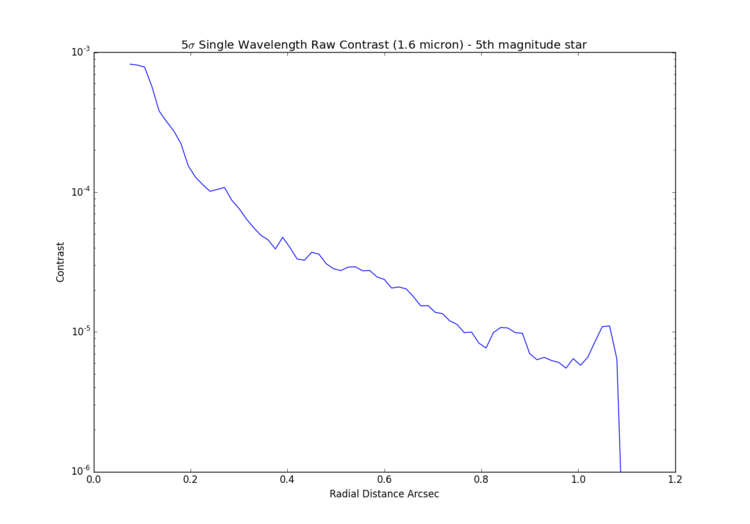A note on sensitivity and contrast. Both are strongly dependent on the performance of SCExAO. SCExAO just went through a rebuild and the throughput/performance is as-yet undetermined relative to the first-light engineering run. Performance metrics like throughput will be resonably close, but it is not yet possible to provide precise sensitivity values for the CHARIS imaging modes. First indications are that CHARIS can exceed the sensitivity limit of the the Pyramid wavefront sensor loop, meaning that faint targets are limited by the sensitivity of the kHz SCExAO wavefront control loop.
for the purposes of S17A shared risk proposals, a one hour observation on each science target will generally account for closing the loop on high order wavefront control, inserting a coronagraph, and taking a set of long exposures.
Targets with an H-band magnitude brighter than 1 can only be observed with the internal CHARIS ND3 filter in-beam, which restricts the user to broadband mode.
The current instrument capabilties are below.
| Band | 50% Transmission Range (nm) | In-Band Filter Transmission |
|
J |
1176-1328 | >80% |
| H | 1490-1783 | >90% |
| K | 2019-2375 | >90% |
| Broadband | 1154-2387 | >93% |
| Cold ND3 | 1165-2365 | OD 3.258 |
| Band | Avg. Spectral Resolution (2x2 pixels) | # Output Channels | CHARIS Internal Throughput |
| J | R = 75.2 | 15 | >40% |
| H | R = 65.2 | 20 | >40% |
| K | R = 77.1 | 17 | >40% |
| Broadband (or ND) | R = 18.4 | 22 | >53% |
| Undispersed | N.A. | 1 | >64% |
| FOV | 2.07"x2.07" | Verified August 10, 2018 |
| Plate Scale | 16.2 mas/lenslet | Verified August 10, 2018 |
| Contrast | See SCExAO | One 5-sigma curve from commissioning provided on this page |
| Recommended Satellite Spot Contrast | 1x10-1 - 1x10-3 | Tunable, Being Calibrated |
| Satellite Spot Location | 15 λ/D (~0.7" at 1550nm) | Max Frequency in FOV at 2370nm |
A curve describing noise in MCDS frames is given at the bottom of the page. The noise is higher than we expect to have, and there are ongoing efforts by the CHARIS team to isolate the source of this noise to get improved read noise performance.
The first estimate of the 5-sigma contrast level provided by SCExAO around a star with Hmag=5.3 from first-light measurements is given below.

